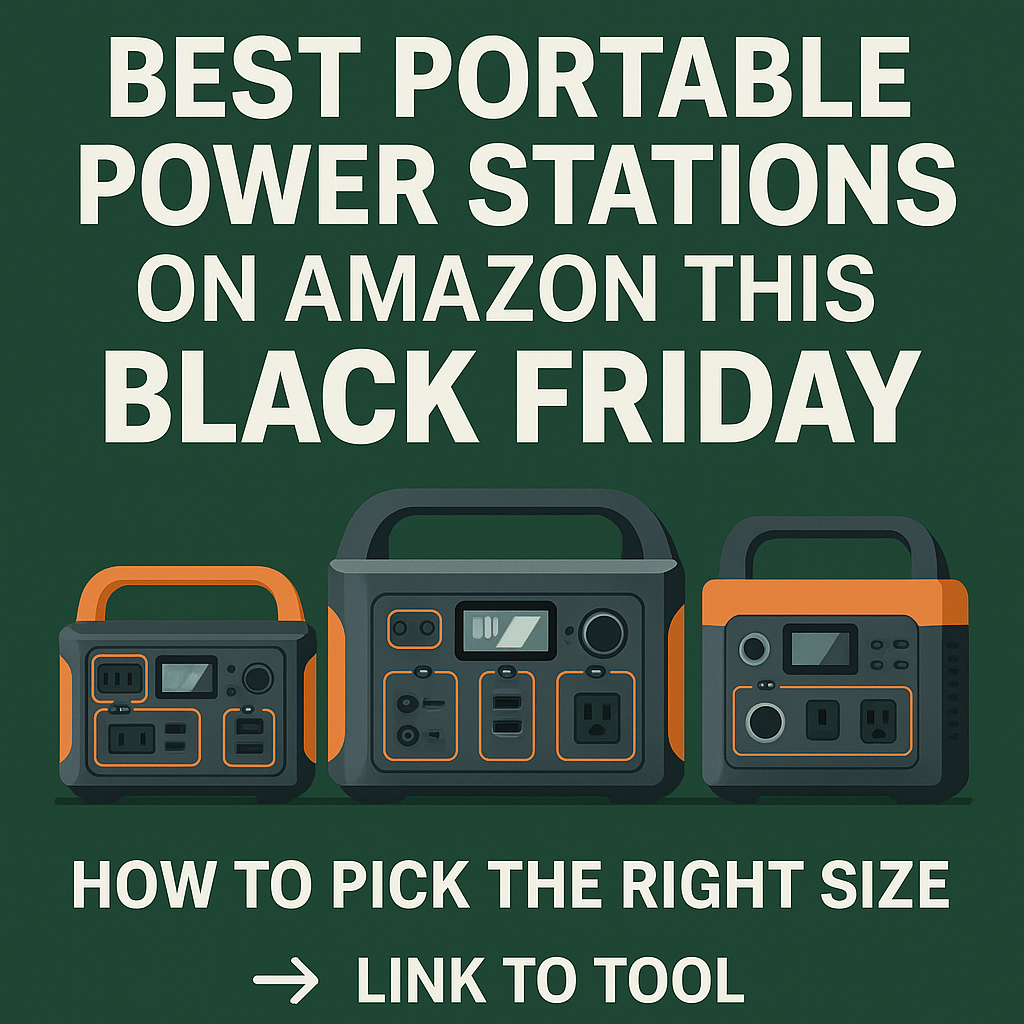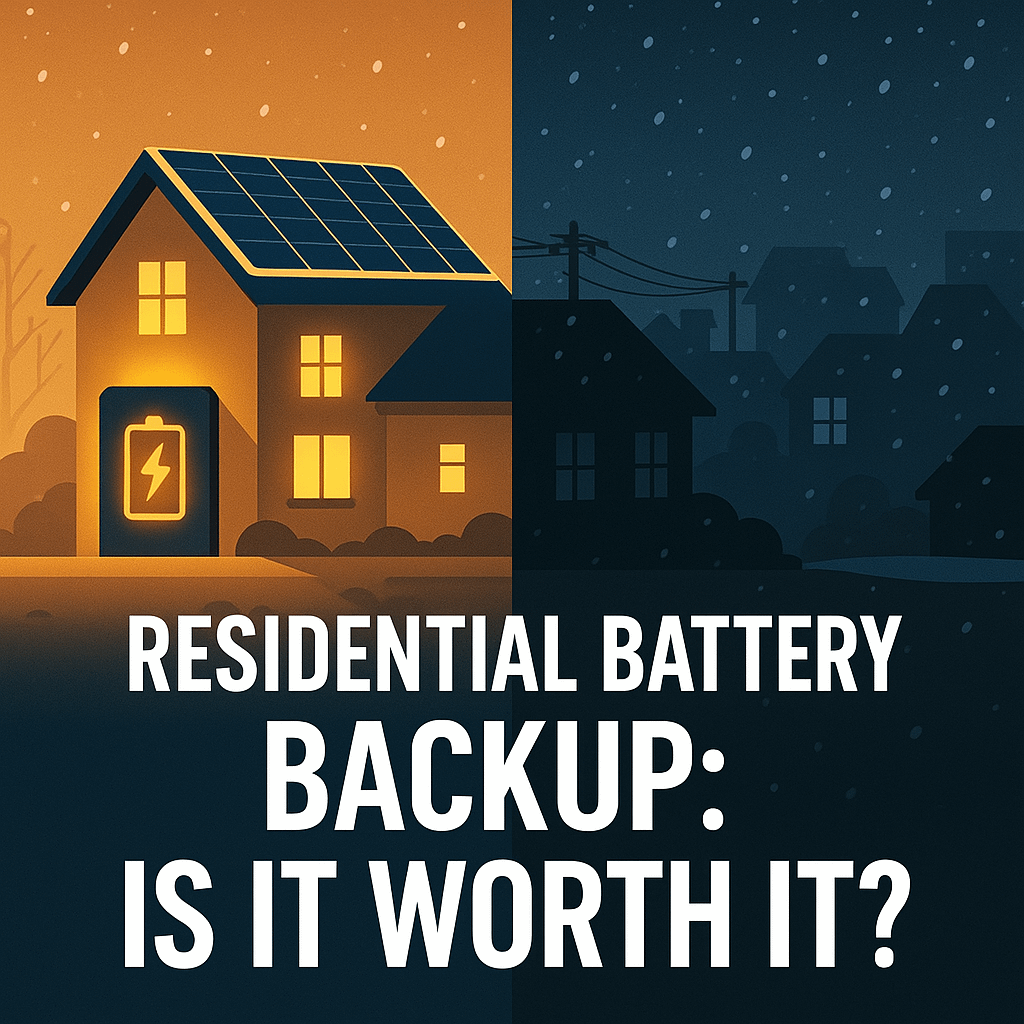Power When You Need It: Batteries in Off-Grid Solar Systems
As a DIY solar enthusiast, you understand the importance of reliable, efficient energy storage for your off-grid solar system. Batteries are your power safety net—they store the sun’s energy during the day and release it when needed, like during nighttime or on less sunny days.
But they do more than just store energy. They manage the electricity flow, smoothing out the intermittent power from the solar panels to ensure a consistent supply. In remote areas or during grid outages, batteries are what keep your system self-sufficient and resilient.
Choosing the right battery for your solar system is critical. It can significantly impact the performance and reliability of your off-grid system.
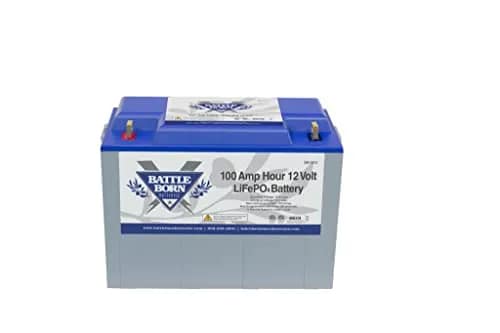
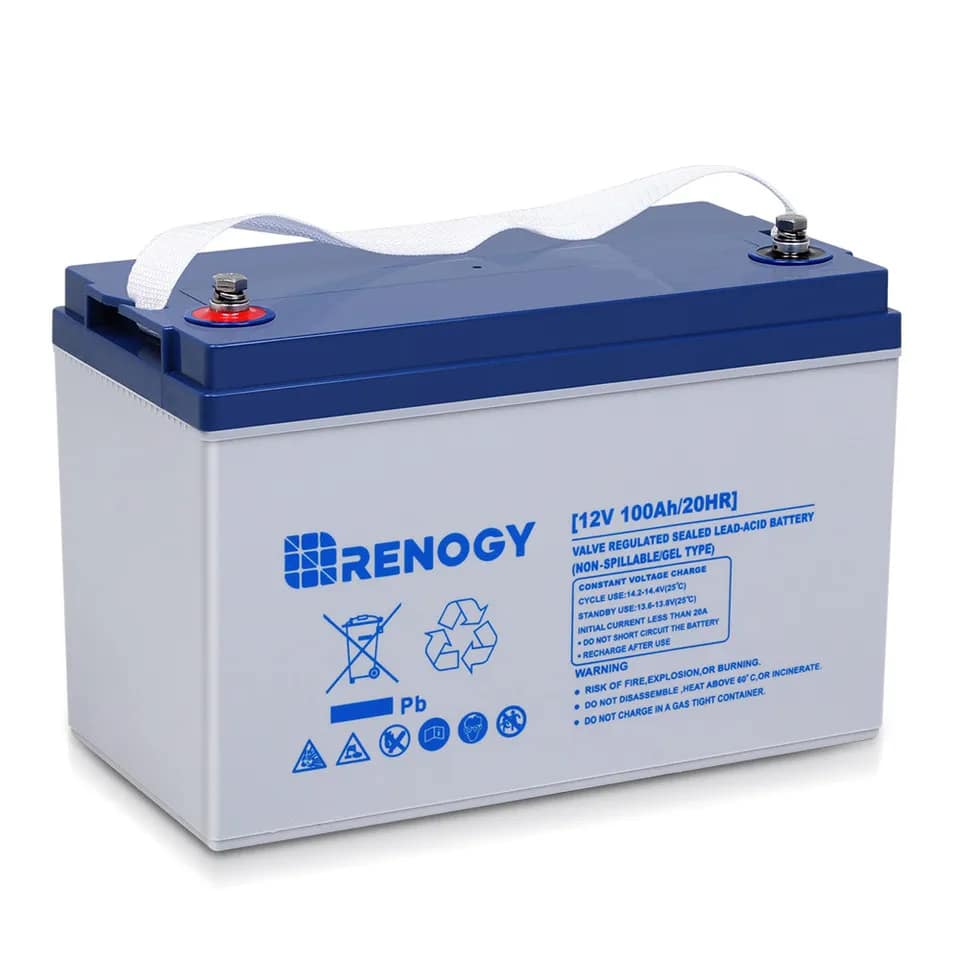
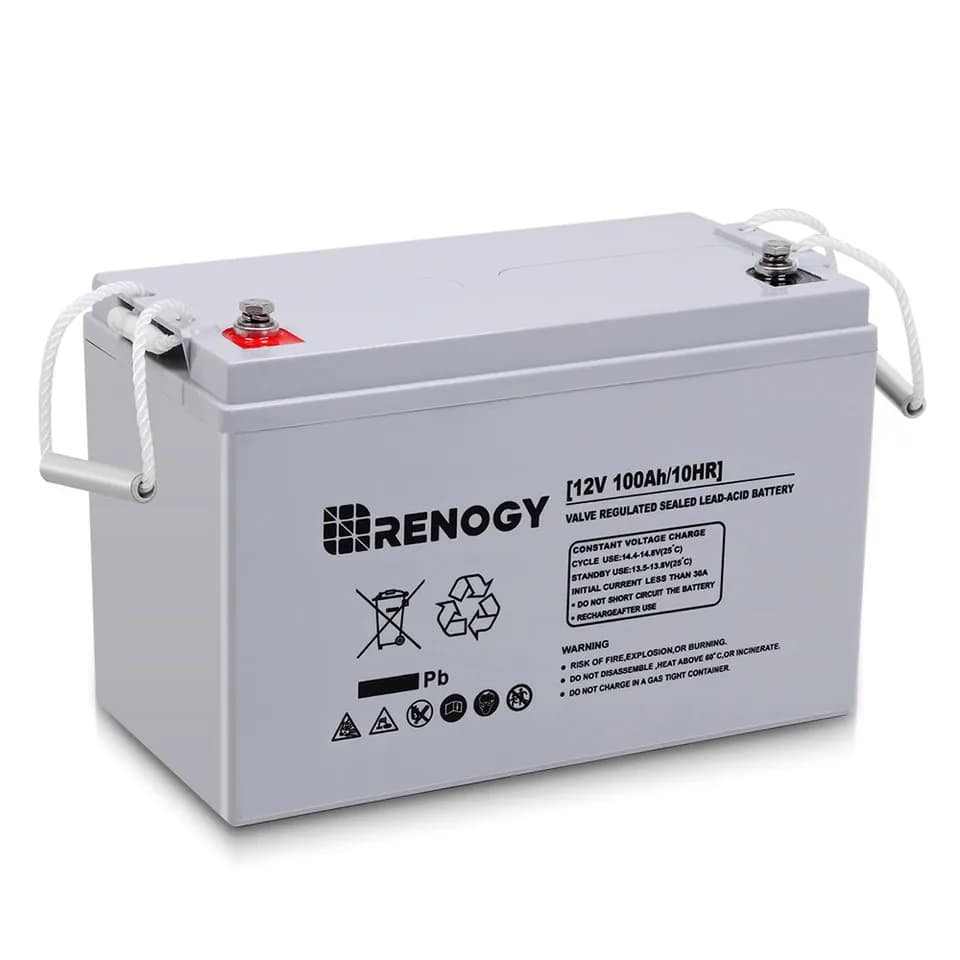
If you’re unsure about how much battery storage you need for your off-grid system, don’t worry—we’ve got you covered. Check out our dedicated article on “How to Size Your Off-Grid Battery Bank.” It offers detailed guidance to help you accurately estimate your storage requirements, ensuring your solar setup is as efficient and reliable as possible. Don’t miss it!
This article is part of Evergreen Off-Grid’s AI Assist blog category. To filter out this category, find our uniquely human insights here.
Evergreen Off-Grid generated this article in part with GPT-3, OpenAI’s large-scale language-generation model. Upon generating draft language, Evergreen Off-Grid reviewed, edited, and revised the language to our liking and we take ultimate responsibility for the content of this publication.This disclaimer will appear on all of our content assisted with AI.

Introducing Our DIY Solar Marketplace
But, before we dive into the specifics of various battery types, we’d like to introduce you to our DIY Solar Marketplace. We understand that picking the right battery for your solar setup can be a daunting task, considering the myriad options available. That’s why we’ve designed our marketplace to make this process easier and more convenient for you.
Our DIY Solar Marketplace is a specially curated platform that brings together top-quality solar batteries from leading brands such as Renogy, HQST, Newpowa, and more. We’ve done the research and made the comparisons so you can focus on what matters most—building your ideal solar setup.
Off-Grid Batteries
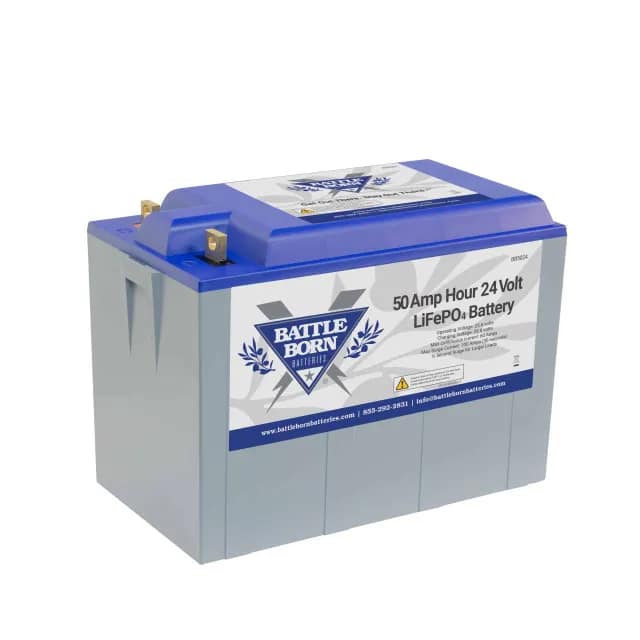
The DIY Solar Marketplace is your trusted companion in your solar journey. Whether you’re just starting out or looking to upgrade your existing system, you’ll find everything you need right here.
Now, let’s delve into the world of solar batteries and help you make an informed choice.
Quick Overview of Battery Types
Solar batteries come in various types, each with its unique characteristics, advantages, and disadvantages. Let’s quickly introduce you to the main kinds you’ll likely encounter as you build your off-grid solar system.
Lithium-Ion Batteries
These are the same type of batteries you’ll find in most modern electronics like laptops and smartphones. For solar applications, a specific type called Lithium Iron Phosphate (LiFePO4) is commonly used due to its safety and longevity.
AGM
Short for Absorbent Glass Mat, these are a type of sealed lead-acid battery that are maintenance-free and safer to use than traditional lead-acid batteries.
Lead Acid Batteries
The oldest type of rechargeable battery, lead-acid batteries have been used in off-grid solar systems for decades. They’re robust and relatively inexpensive but do require regular maintenance to ensure a long lifespan.
Hybrid Gel Batteries
Hybrid Gel batteries, a sub-type of lead-acid batteries, provide a maintenance-free solution that can withstand deep discharging and irregular charging patterns. They offer safety and durability by incorporating silica into the electrolyte to create a leak-proof gel, making them a reliable choice for off-grid solar systems.
Lead Carbon Batteries
These are an advanced type of lead-acid battery with a carbon additive that enhances performance and lifespan. They are particularly well-suited for solar applications due to their ability to handle frequent cycling.
Notable Mentions
There are also other types of batteries, such as Nickel-Cadmium (NiCd) and Nickel-Metal Hydride (NiMH), which are less common but may still be relevant depending on your specific needs.
Each of these battery types brings something different to the table, and what’s best for your solar system will depend on various factors like your energy needs, budget, and maintenance preferences. In the following sections, we’ll go into more detail about each of these types to help you make an informed decision.
Choosing Your Solar Sidekick: A Comprehensive Guide to Solar Battery Types
Lithium-Ion Batteries
Basic Functioning
Lithium-ion batteries, specifically Lithium Iron Phosphate (LiFePO4) for solar applications, work by moving lithium ions from the negative electrode to the positive electrode during discharge, and back when charging. This back-and-forth movement of ions allows the batteries to store and release energy.
Advantages
Lithium-ion batteries are known for their high energy density, meaning they can store a lot of energy in a small package. They also have a low self-discharge rate, so they retain their charge well when not in use. In addition, they require no maintenance, have a longer lifespan than most other types, and can handle high discharge rates, making them efficient and reliable.
Disadvantages
The main disadvantage of lithium-ion batteries is their cost—they tend to be more expensive upfront than other types. However, their longer lifespan and superior performance often make up for the higher initial investment over time. While they’re generally safe, they do require a special management system to prevent overcharging or discharging, which can lead to damage or even safety hazards.
Ideal Use Cases
Lithium-ion batteries are ideal for off-grid solar systems that demand high efficiency, low maintenance, and reliable long-term performance. They’re especially suitable for applications that require a high energy density and frequent cycling.
Availability on DIY Solar Marketplace
Our DIY Solar Marketplace offers a wide selection of lithium-ion batteries from leading manufacturers. Whether you’re looking for a compact solution for a small system or a high-capacity battery for a larger setup, you’ll find options to suit your needs. We’ve also highlighted the best deals to ensure you get the most value for your money. Remember, while they may be a more expensive choice upfront, the long-term benefits of lithium-ion batteries often make them a worthwhile investment.
Navigating the AGM Route: Absorbent Glass Mat Batteries
Basic Functioning
AGM batteries, short for Absorbent Glass Mat, are a type of sealed lead-acid battery. They operate by using a thin fiberglass mat sandwiched between the lead plates, which absorbs and holds the battery acid, hence the name. This design allows the electrolyte to stay closer to the plate’s active material, improving the discharge and recharge efficiency.
Advantages
AGM batteries are valued for their reliability, maintenance-free operation, and safety. They can handle high current loads, making them ideal for systems with high surge appliances. They also have a lower self-discharge rate than traditional lead-acid batteries, meaning they retain their charge for a longer period when not in use. Moreover, being sealed, they can be installed in various orientations without the risk of acid leakage.
Disadvantages
While AGM batteries have a good lifespan, they typically don’t last as long as lithium-ion batteries. Over-discharging can significantly shorten their lifespan, so proper battery management is crucial. They’re also less efficient in terms of energy density compared to lithium-ion batteries, meaning they’re larger and heavier for the same amount of energy storage.
Ideal Use Cases
AGM batteries are an excellent choice for off-grid solar systems that require a robust, safe, and maintenance-free battery. They are particularly suitable for environments that demand spill-proof and leak-proof batteries, and for systems with high surge loads, such as those with heavy-duty power tools or appliances.
Availability on DIY Solar Marketplace
Our DIY Solar Marketplace offers AGM batteries from trusted brands. From small to large capacities, we’ve got a selection that caters to various system requirements. We also offer competitive prices and deals, ensuring you get high-quality products at great value. AGM batteries strike a good balance between cost, performance, and convenience, making them a popular choice for many solar enthusiasts.
The Classic Choice: Lead Acid Batteries
Basic Functioning
Lead Acid batteries are the traditional type of rechargeable battery and have been used in various applications for over a century. They function by a chemical reaction between lead plates and sulfuric acid, which acts as the electrolyte. The reaction produces electricity, allowing the battery to store and release energy.
Advantages
Lead Acid batteries are valued for their affordability and wide availability. They are also robust and can handle high current loads well, making them suitable for systems with high power demand appliances. Plus, they’re generally easy to recycle, making them a more environmentally friendly option than some other types.
Disadvantages
The main disadvantages of lead acid batteries are their weight, size, and maintenance requirements. They’re larger and heavier than other types for the same energy storage capacity. They also require regular maintenance, such as topping up with distilled water and periodic equalization charges, to maintain optimal performance and lifespan. Their lifespan is typically shorter than lithium-ion and AGM batteries, especially under frequent deep discharge conditions.
Ideal Use Cases
Lead Acid batteries are a solid choice for off-grid solar systems where initial cost is a primary concern. They’re particularly suitable for larger setups where weight and space are not as much of an issue, and where regular maintenance can be assured.
Availability on DIY Solar Marketplace
Currently, traditional lead-acid batteries are not available in our DIY Solar Marketplace. We’re always working to enhance our product range, but in the meantime, we encourage you to explore our selection of other high-quality battery types, such as Lithium-ion, AGM, and limited Hybrid Gel batteries, to find the right fit for your off-grid solar system needs.
Balancing Act: Hybrid Gel Batteries
Basic Functioning
Hybrid Gel batteries are a sub-type of lead-acid batteries where the electrolyte is mixed with silica, turning it into a gel. This thick, immobile gel allows the battery to avoid leakage and spillage problems that can occur with traditional lead-acid batteries.
Advantages
Hybrid Gel batteries offer a number of advantages. They are maintenance-free and have a low self-discharge rate, meaning they hold their charge for a longer period when not in use. They’re also less prone to damage from deep discharging, making them more suitable for systems with irregular charging patterns. Additionally, they are safer to use, as there’s no risk of acid leakage, even if the battery case is damaged.
Disadvantages
Despite their advantages, Hybrid Gel batteries also have some downsides. They are more expensive than regular lead-acid batteries and have a lower energy density, meaning they are larger and heavier for the same amount of energy storage. They can also be sensitive to high charging voltages, requiring specific chargers or charge controllers to prevent premature failure.
Ideal Use Cases
Hybrid Gel batteries are an excellent choice for off-grid solar systems that need a reliable, maintenance-free, and durable battery that can withstand deep discharging. They’re particularly suitable for systems with irregular charging patterns or in situations where leakage or spillage could be a concern.
Availability on DIY Solar Marketplace
While our DIY Solar Marketplace has a limited selection of Hybrid Gel batteries, we’ve ensured that each option is high-quality and durable. Keep in mind that due to their specific benefits, these batteries may be a perfect fit for certain systems despite their limited availability.
Exploring Alternatives: Lead Carbon
While we’ve covered the most common types of batteries for solar energy storage, it’s worth mentioning there are alternatives that may be relevant for some users, such as Lead Carbon batteries.
Basic Functioning
Lead Carbon batteries are an advanced type of lead-acid battery. They incorporate carbon in the battery’s negative plate, which helps to reduce the effects of sulfation, a common issue in traditional lead-acid batteries that can shorten their lifespan.
Advantages
Lead Carbon batteries have several advantages over traditional lead-acid batteries. The addition of carbon enhances the battery’s performance, increases its lifespan, and improves its ability to handle partial state of charge operations, which is common in solar applications.
Disadvantages
However, like other lead-acid batteries, Lead Carbon batteries still require maintenance and are sensitive to overcharging. While their lifespan is better than traditional lead-acid batteries, they do not typically last as long as Lithium-ion or AGM batteries. Also, they’re generally heavier and require more space for the same energy capacity.
Ideal Use Cases
Lead Carbon batteries are a good option for solar installations where frequent cycling (charging and discharging) is expected. They handle partial state of charge operations well, making them suitable for off-grid solar systems, particularly in areas with less predictable sunlight.
Availability on DIY Solar Marketplace
Unfortunately, at this time, Lead Carbon batteries are not available in our DIY Solar Marketplace. We are continually expanding our product range, so keep checking back for updates. In the meantime, we encourage you to consider our selection of Lithium-ion, AGM, and limited Hybrid Gel batteries, which offer excellent performance and reliability for off-grid solar systems.
Evaluating Your Options: A Comparative Snapshot of Solar Battery Types
The table below provides a concise comparison of four primary solar battery types—Lithium-ion, AGM, Hybrid Gel, and Lead Acid—across key parameters. Use this as a quick reference to understand the cost, efficiency, lifespan, maintenance needs, and environmental impact of each battery type. Remember, the “best” battery for your solar setup depends on a variety of factors, including your specific needs, budget, and long-term sustainability goals.
| Battery Type | Cost | Efficiency | Lifespan | Maintenance | Environmental Impact |
|---|---|---|---|---|---|
| Lithium-ion | High | High (>95%) | 10-20 years | Low | Moderate |
| AGM | Moderate | Moderate (80-85%) | 4-7 years | Low | Moderate |
| Hybrid Gel | Moderate to High | Moderate (80-85%) | 8-12 years | Low | Moderate |
| Lead Acid | Low | Low (70-85%) | 3-5 years | High | High |
Scenario Analysis: Choosing the Right Battery for Your Solar Setup
When choosing the right battery for your solar setup, your specific needs and circumstances play a crucial role. Let’s explore a few hypothetical scenarios to understand how these factors might influence your decision:
- Budget-Conscious Small Setup: If you’re working with a limited budget and a smaller solar setup, AGM batteries might be your best bet. They offer a good balance between cost and performance, and their low maintenance needs make them a user-friendly choice.
- Large Setup with High Energy Needs: For larger solar setups with high energy needs, Lithium-ion batteries could be worth the investment. While they come with a higher upfront cost, their long lifespan, high efficiency, and low maintenance needs can pay off in the long run.
- Intermediate Setup with Long-Term Sustainability Goals: If you have a moderate-sized solar setup and are looking to strike a balance between cost, performance, and environmental impact, Hybrid Gel batteries could be an ideal choice. They offer a longer lifespan than AGM batteries and are less resource-intensive than Lithium-ion batteries.
- Limited Maintenance Capability: If you’re looking for a battery type that requires minimal upkeep, Lithium-ion and AGM batteries are both excellent options, with Lithium-ion providing a longer lifespan and higher efficiency.
Remember, these are just broad recommendations. The best battery for your solar setup will depend on a nuanced consideration of your energy needs, budget, maintenance capabilities, and long-term goals. Our DIY Solar Marketplace offers a wide range of batteries to suit various needs and budgets—feel free to explore and find the perfect match for your off-grid system.
Your Power, Your Choice: Selecting the Right Battery for Your Solar Needs
Choosing the right battery for your solar setup can seem daunting given the array of options available. However, understanding your specific needs and circumstances can significantly simplify this process. Here are some key factors to consider:
- Cost: Consider both the upfront cost and the long-term value of the battery. While some batteries might have a higher upfront cost, they could offer better value over time due to their longer lifespan and higher efficiency.
- Lifespan: The expected lifespan of the battery is a crucial factor. A longer lifespan means less frequent replacements, leading to lower long-term costs and less hassle.
- Maintenance: Some batteries require more maintenance than others. If you’re unable to commit to regular maintenance, consider a battery type that requires minimal upkeep.
- Efficiency: High-efficiency batteries can store and deliver more of the energy produced by your solar panels, leading to better overall system performance.
- Size of Solar Setup: The size and energy needs of your solar setup will significantly impact the type of battery you need. Larger setups with higher energy demands might benefit from higher-capacity, high-efficiency batteries.
- Environmental Impact: The environmental footprint of the battery, from manufacturing to disposal, can also be a factor to consider, especially if sustainability is a key concern for you.
Our DIY Solar Marketplace is designed to help you navigate these considerations. We’ve curated a diverse range of batteries from trusted brands and suppliers, all in one place. With detailed product information and comparative features, we strive to make your decision-making process smoother and more informed. Remember, the right battery for your solar setup is one that best aligns with your energy needs, budget, and long-term sustainability goals. Choose wisely, and power your off-grid journey effectively!
Powering Your Solar Journey: A Final Note
In our exploration of batteries for off-grid solar systems, we’ve covered a lot of ground. From understanding the critical role of batteries in energy storage and management, to diving deep into the specifics of Lithium Ion, AGM, Hybrid Gel, and other battery types, it’s clear that the right battery can significantly enhance the performance of your solar setup.
Each battery type presents its own set of advantages and disadvantages, making some more suitable for certain scenarios than others. Your decision should account for factors such as cost, lifespan, maintenance requirements, efficiency, and the size of your solar setup.
Unfortunately, it’s also clear that not all battery types are equally available. Traditional Lead Acid batteries, for instance, are not available on our marketplace due to their maintenance requirements, environmental implications, and low efficiency. However, our DIY Solar Marketplace offers a diverse range of other high-performing batteries to cater to your specific needs.
Our DIY Solar Marketplace is your one-stop-shop for all your off-grid solar battery needs. It provides a comprehensive platform to compare different batteries based on their features, reviews, and prices. Our platform ensures you have access to the best deals from a range of trusted brands and suppliers.
Remember, the right battery is the one that suits your unique needs and circumstances. So, don’t rush. Take your time to consider all the variables, and make an informed decision.
We invite you to explore the DIY Solar Marketplace today. Find the best battery for your off-grid solar system, and embark on your solar journey with confidence. Your power is in your hands!


